Install the Commvault software packages on the standby CommServe host. You can also setup more than one standby CommServe hosts, if necessary.
Before You Begin
-
Verify that the prerequisites needed to setup the environment are available before setting up the High Availability CommServe Host feature. For more information, see Planning for the High Availability CommServe Host Setup in a Linux Environment.
-
Verify and ensure that Two-Factor Authentication is either disabled, or use an account without Two-Factor Authentication to install the standby CommServe host.
Standby CommServe installation will fail if Two-Factor Authentication is enabled at the CommCell level with Time-based One-Time Password. Instance002 will install successfully, but instance001 will fail as it will try to use the same credentials which is only valid for 1 time. For more information, see the following topics:
Procedure
-
Log on to the production CommServe host as root.
-
Download the Commvault software installation packages from the Commvault Store.
-
Navigate to the folder, or mount point, containing the software installation packages and run the following command.
./cvpkgadd -
The OEM Selection screen appears.

Select Commvault (or the appropriate OEM) and then click Next.
-
The Welcome to Commvault Installer screen appears.
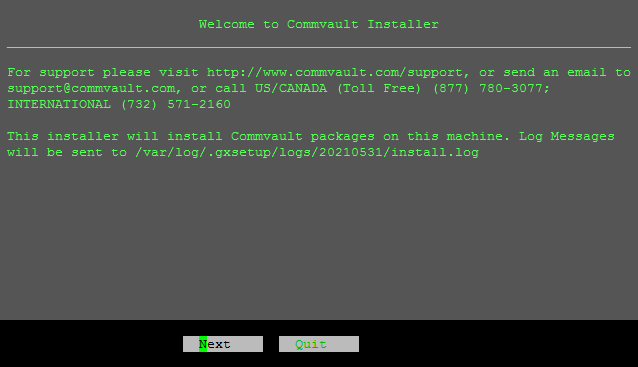
Click Next.
-
The Install Task screen appears.
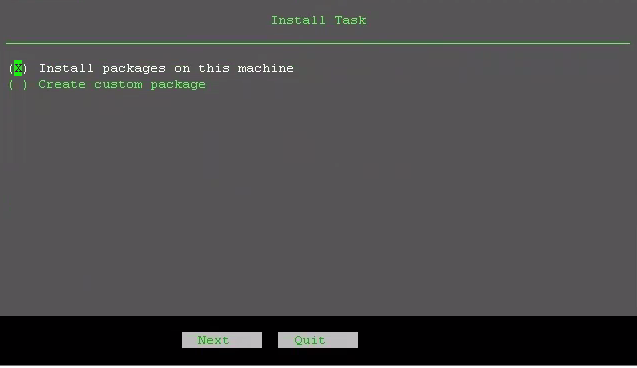
Select Install packages on this machine and then click Next.
-
The Install Option screen appears.

Select Advanced Selection and then click Next.
-
The Interface Selection screen may appear, when multiple interfaces (NICs) are available in the server.
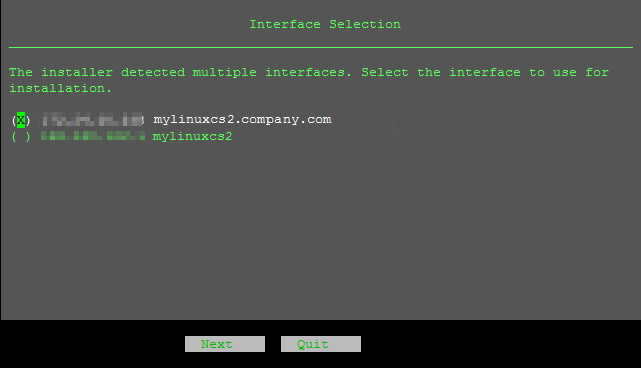
Select the interface to perform the installation and then click Next.
-
The Package Selection screen appears.
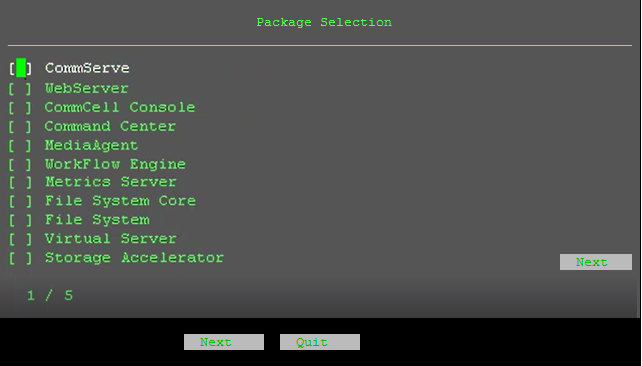
-
Select the CommServe package and then click the Next button on the right-side of the dialog box.

-
Select the CommServe Failover package.
Note
The CommServe Failover package automatically installs the SQL Server agent and the CommServe Failover packages in a separate instance. (No additional user intervention is needed.)
-
OPTIONAL: Select any additional packages that you may want to install on the CommServe server.
-
Click Next.
-
-
The Failover Install Option screen appears.
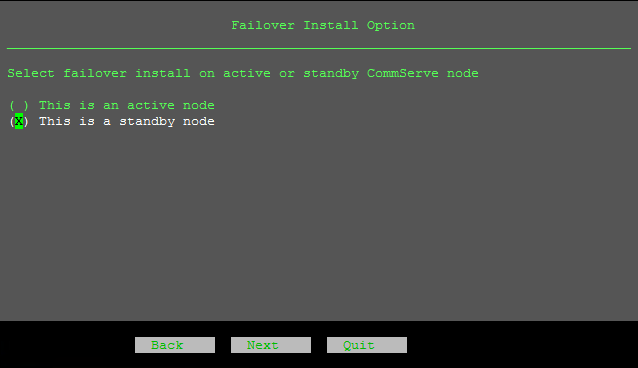
Select This is a standby node and then click Next.
-
The Install Directory screen appears.
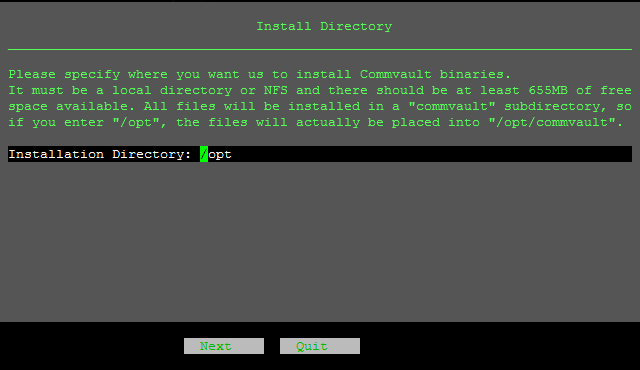
Verify the installation directory (or specify a new directory) and then click Next.
This Installation Directory is for the SQL client, as the SQL client is installed first on the standby CommServe host.
Note
If you choose another directory, make sure that you have
rootprivileges and read access to 'Others' on that directory. The /opt directory has 755 (-rwxr-xr-x) permissions by default. -
The Log Directory screen appears.
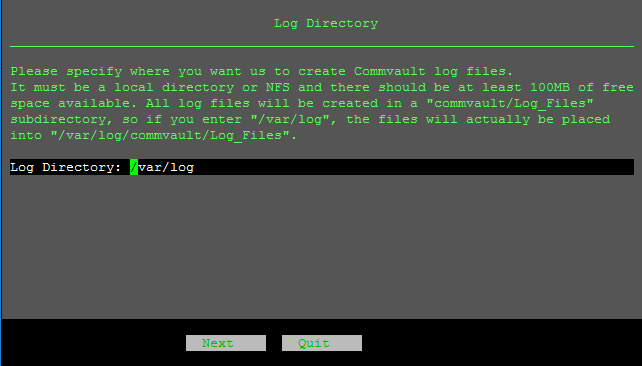
Verify the log directory (or specify a new directory) and then click Next.
-
The Unix Group Assignments screen appears.
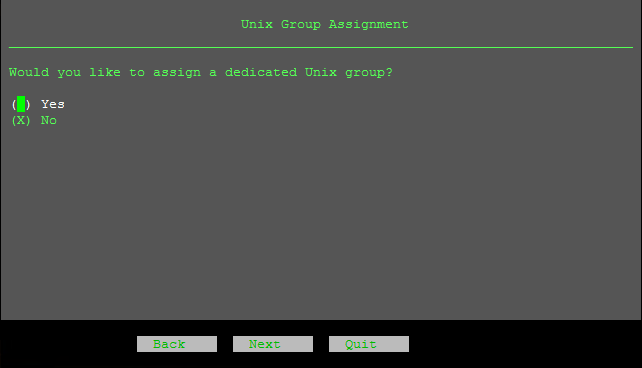
Select one of the following options:
-
Select Yes to assign full access permissions to both the group and other users, and then click Next. (Proceed to the next step.)
-
Select No to setup separate permissions for group users and other users, and then click Next.
The Permission Details screen appears.
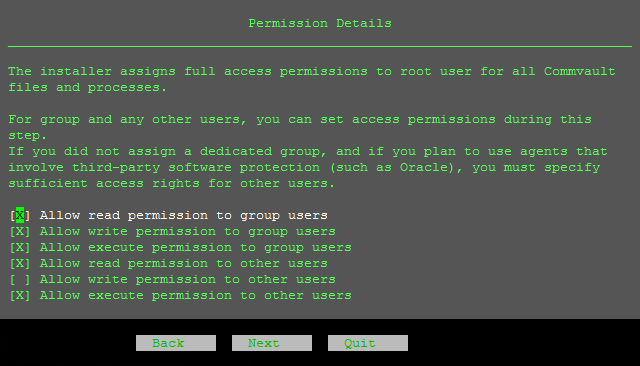
Select the necessary permissions for group users and other users, and then click Next.
-
-
The Client Host Information screen appears.
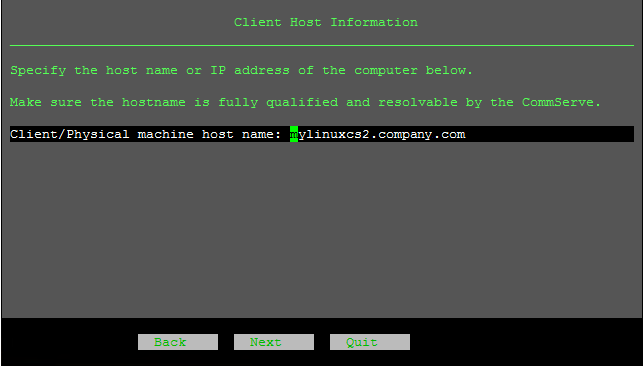
Verify the hostname for the standby CommServe host, and then click Next.
-
The Client Information screen appears.
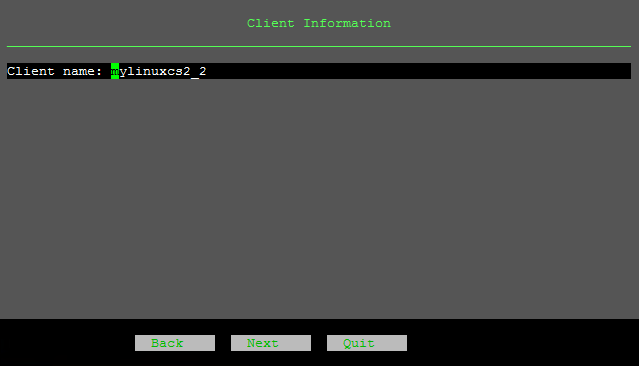
Verify the client name for the SQL client in the standby CommServe host, and then click Next.
This is the standalone SQL agent installed in Instance002 which will be used for restoring the SQL database that was backed up from the production CommServe host.
Tip
Choose a meaningful hostname to clearly differentiate this SQL client in the user interfaces like Command Center / CommCell Console.
-
The Summary screen appears.

Verify the summary, and then click Next.
The software copies the binaries and installs the packages for the SQL client (Instance002) and the progress will be displayed. This process may take a few minutes.
-
The Server Information screen appears.
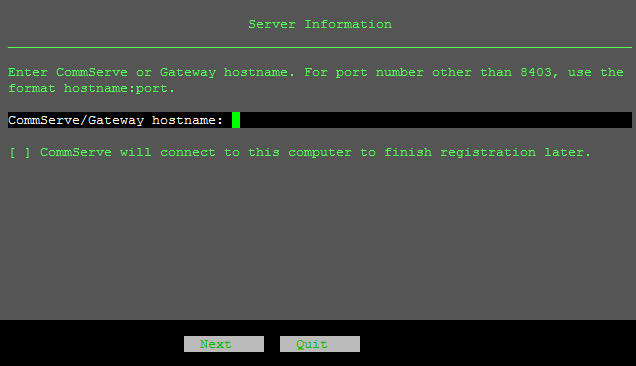
Type the hostname of the production CommServe server host, and then click Next.
-
The Configure HTTP Proxy screen appears.
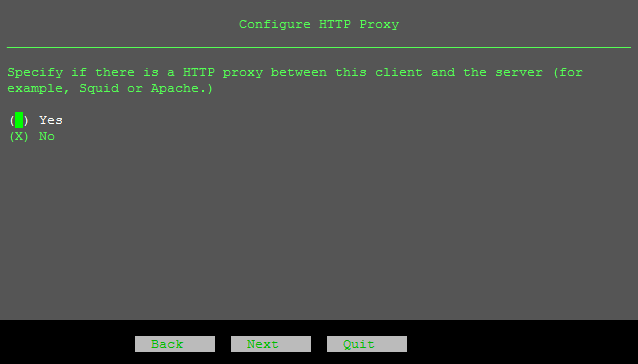
Select one of the following options:
-
Select No if there are no HTTP proxy server to connect to the CommServe server, and then click Next. (Proceed to the next step.)
-
Select Yes, if the SQL client must connect to the CommServe server through a HTTP server, and then click Next.
The Setting HTTP Proxy Configuration screen appears.
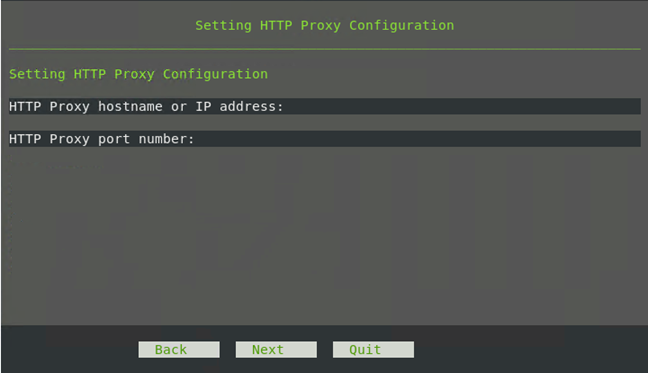
Enter the following information and then click Next.
-
Type the hostname or the IP address for the HTTP proxy server.
-
Type the port number that must be used to communicate with the proxy server.
-
-
-
The Server Authentication screen appears.

Type the Username and Password for the CommCell, or the AuthCode, if available. Click Next.
This is the Username and Password associated with the admin account that was added in the Commvault ID screen displayed while installing the production Commserve host.
-
The Installation Status screen appears.
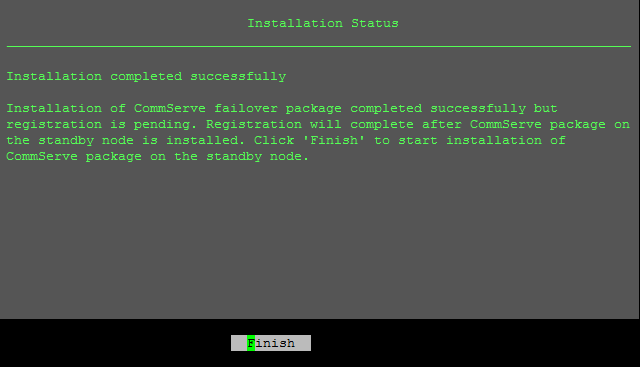
Click Finish to complete the SQL client (or Instance002) installation.
Complete the following steps to setup the CommServe server (or Instance001).
-
The Welcome to Commvault Installer screen appears.

Click Next.
-
The Interface Selection screen may appear, when multiple interfaces (NICs) are available in the server.

Select the interface to perform the installation and then click Next.
-
The Install Directory screen appears.
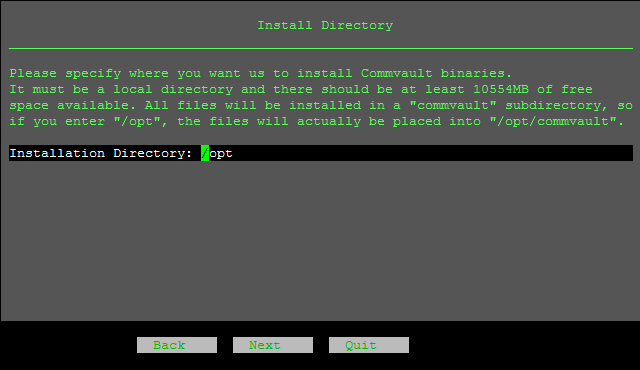
Verify the installation directory (or specify a new directory) and then click Next.
Note
If you choose another directory, make sure that you have
rootprivileges and read access to 'Others' on that directory. The /opt directory has 755 (-rwxr-xr-x) permissions by default. -
The Log Directory screen appears.

Verify the log directory (or specify a new directory) and then click Next.
-
The Unix Group Assignments screen appears.

Select one of the following options:
-
Select Yes to assign full access permissions to both the group and other users, and then click Next. (Proceed to the next step.)
-
Select No to setup separate permissions for group users and other users, and then click Next.
The Permission Details screen appears.

Select the necessary permissions for group users and other users, and then click Next.
-
-
The Client Host Information screen appears.

Verify the hostname for the standby CommServe host, and then click Next.
-
The Client Information screen appears.

Verify the client name for the standby CommServe server client in the standby CommServe host, and then click Next.
This is the standby CommServe host installed in Instance001.
Tip
Choose a meaningful hostname to clearly differentiate this standby Commserve client in the user interfaces like Command Center / CommCell Console.
The software copies the binaries and installs the packages for the CommServe server on Instance001 and the progress will be displayed. This process may take a few minutes.
-
The Commvault Database Installation Path screen appears.

Verify the database installation path , and then click Next.
-
The Disaster Recovery Path screen appears.
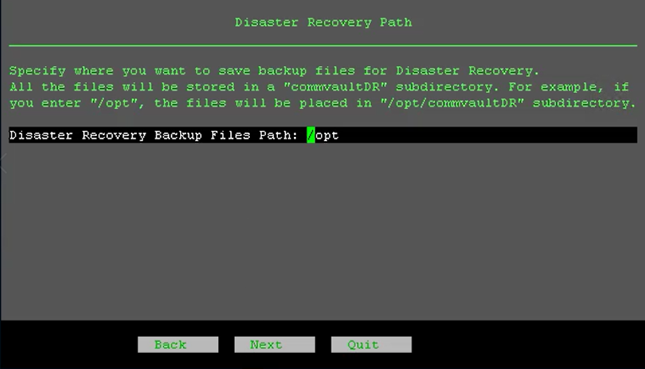
Verify the path for Disaster Recovery (DR) Backups and then click Next.
The software installs the database and the progress will be displayed. This process may take a few minutes.
-
The Installation Status screen appears.
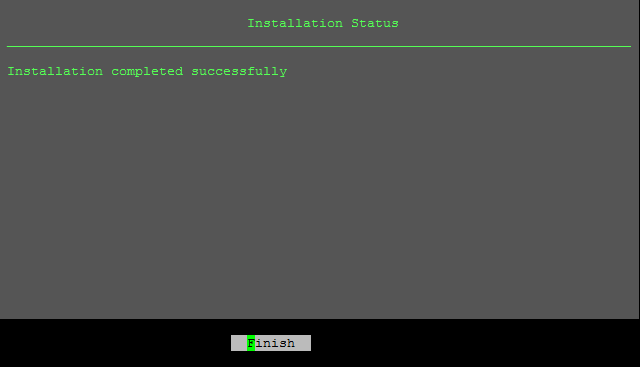
Click Finish.
Result
All the services will be installed. Services on Instance001 will not be started. All the services in Instance002 will be started. You can view the services as follows:
commvault -listClick here to view a sample output

What to Do Next
Enable the CommServe LiveSync feature which facilitates CommServe Recovery Using CommServe LiveSync. For more information on enabling the LiveSync operation, see Enabling CommServe LiveSync.
Additional Notes
Any additional packages installed on the primary CommServe host, which includes other Commvault packages, or any third-party components, must be manually installed in the standby CommServe host. Also once the LiveSync operation is enabled, the LiveSync process will synchronize the information stored in the CommServe database from the production to the standby CommServe. For example, passwords and Additional Settings stored in the database. Any additional entities, such as third-party packages, scripts, registry keys, certificates, IIS settings, configuration files, etc. must be manually applied before or after failover as needed.